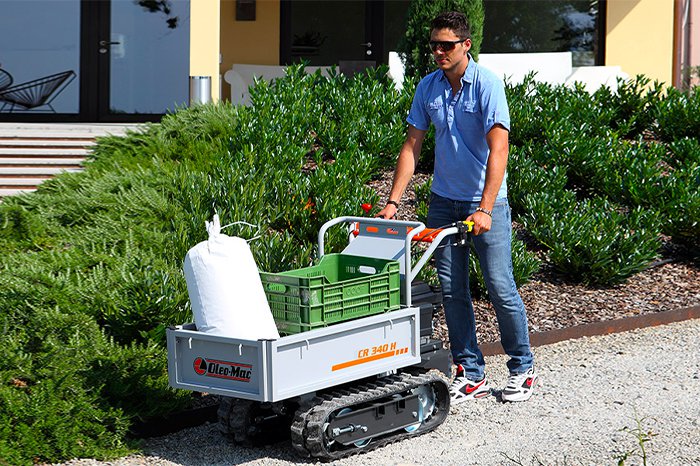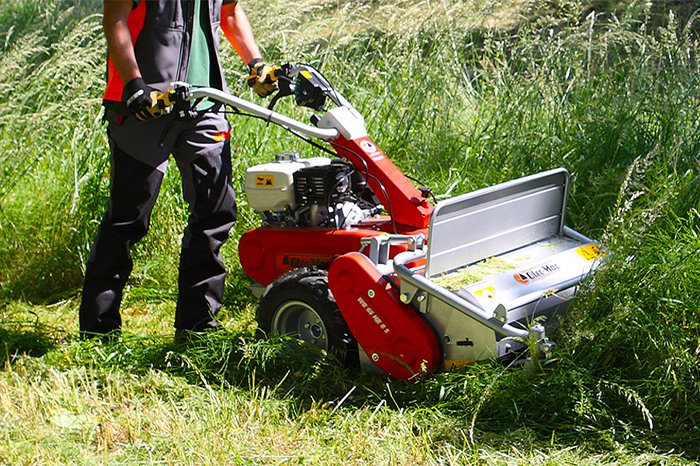How do you start growing an orchard? Not by getting your hands dirty immediately, but by designing it. Planting an orchard, even a small one, is an investment of time and money that should not be taken lightly. You need to start your orchard off on the right foot, by having the clearest possible ideas about what to plant in your orchard, and planning the right spacings as well as irrigation and protection systems.
Starting off on the right foot means not having to change the layout once you’ve started, least of all because fruit trees take time (and by that we mean years!) to take root, grow and become productive. Today we examine the key principles for designing an orchard, when and how to plant an orchard and finally some basic tips for maintaining them.
How to design an orchard
To start an orchard, small or large, from scratch, you first need a large enough area available in your garden or in the countryside, then:
-
Find the spot that can give you the best combination of good sun exposure, minimal shade and good protection from prevailing winds (if they are very strong).
-
Evaluate the soil: it must be fertile, with a balanced particle size, not too light or heavy.
-
Select the most suitable species and varieties of fruit trees.
-
Organise the arrangement of the trees, i.e. the rows and the planting layout: the spacing within and between the rows depends on the plants chosen, the training system, the rootstock and the soil fertility.
In deciding which fruit trees to plan, in addition to your tastes and how you prefer to harvest your crops (concentrated in a short period of time, or spread over a longer period), it is essential to consider the local climate, the soil characteristics and resistance to plant diseases. If you opt for a mixed orchard with a variety of fruit trees, in order for it to be productive you must take pollination/fertilisation needs into account.
When and how to plant the orchard
Let's start by looking at when to plant the orchard. In general, you can plant fruit trees in October and November. If, instead of bare-root whips (saplings), you use potted plants that are already 3-4 years old, you can transplant them into the orchard even in late winter/early spring.
Here are the steps you need to follow to plant trees in your orchard:
-
Clean up the area intended for the orchard and till the soil. To speed up the tilling process you can use a rotary tiller such as the Oleo-Mac MH 198 RKS medium power rotary tiller with 6 blades and 85 cm cutting width.
-
Apply a basal dressing along the orchard rows followed by digging: you can use mature manure or compost, or organic pelleted fertiliser.
-
Install support poles for anti-hail, shade or anti-insect netting, if needed.
-
For each fruit tree, dig a long, deep hole at least 50 cm wide: separate the excavated topsoil (the first 20-30 cm) from the deeper soil.
-
Insert the plant and cover the roots with the excavated soil, keeping the layers in their original order: mix the fertiliser into the topsoil, keeping it at the edges of the hole.
-
Water abundantly and, if you planted a whip, insert a brace into the ground and tie it to the plant.
-
Finish filling the hole using the remaining soil, being careful to leave uncovered the sapling’s graft point, which may be very low.
How should you irrigate the orchard? Unless it is a small orchard with only a few plants that you can water easily with a hosepipe or watering can, to irrigate the orchard you should install a drip irrigation system, which can be surface-mounted (resting on the ground or suspended) or underground.
To transport the plants, fertiliser bags and orchard planting equipment, you can use a transporter or take advantage of a trailer hitched to a garden tractor mower such as the MISTRAL 72/13 H rider mower or the OM 103/21 rear discharge garden tractor.
Orchard maintenance
Once you have planted the orchard, you can apply mulch at the base of the fruit trees, by spreading mulch sheets or piling plant material around the stems up to a height of around 1 m. You can also let the grass grow on the soil between the fruit trees and between the rows (grass cover-cropping).
Mulching keeps weeds at bay so they don't compete with your crops, as well as reducing water consumption, stimulating plant development and keeping the soil softer. Grass cover-cropping also controls weeds, besides facilitating orchard access and maintenance work, reducing soil compaction and nourishing it with organic matter.
In warm weather, tidy the inter-rows (i.e. between the rows) by periodically mowing the grass: you can do this using a garden tractor mower or a brushcutter, such as the BC 530 S professional brushcutter. You can also use dry grass clippings to spread natural mulch at the base of the fruit trees.
In March, after winter pruning activities, for the first mowing of the grass in your orchard, instead of a brushcutter or a garden tractor you can use a flail mower, which will also shred the pruning waste.
Grass cover-cropping is a well-established technique that is also useful for the inter-rows of vineyards: read more in our article on techniques and benefits of vineyard grass cover-cropping and inter-row soil cultivation.


After the extra fertilisation during the planting stage, your fruit trees need fertilising regularly. This is a task you should perform in late summer/early autumn, before the vegetative dormancy period, so that the plants can accumulate reserves. You can also do it again in spring, which is one of the most demanding periods in the plants’ annual cycle. Bear in mind that, by piling natural mulch at the base of the plants and leaving mowing and pruning waste shredded with the flail mower in the inter-rows, you are enriching the soil of your orchard.
On the subject of inter-row grass-cover cropping and fertilisation of the orchard, we earlier mentioned pruning. Depending on the age of your plants, there are several types of pruning you can do in the orchard:
-
Shape pruning: this is done in the third/fourth year after planting and is intended to give a structure to the fruit trees (based on the form of cultivation chosen), balance out the typical vigour of the young plants and encourage the production of fruit.
-
Production pruning: this is done on fruit trees from the fourth/fifth year onwards, when they enter full production. It essentially serves to maintain their shape, achieve a good balance between vegetative growth and productivity, and renew the vegetation by eliminating superfluous foliage or branches that have exhausted their productive function.
For pruning you need sharp and clean tools, which can be either manual pruning tools—such as traditional shears—or a pruning chainsaw and telescopic pruner, which are more suitable for large-scale interventions and for cutting the thickest branches.
Which pruning technique you use for your orchard depends on the type of trees and your training system. However, there are some universally applicable tasks: we talk about them with regard to production pruning in this article on pruning in winter.









